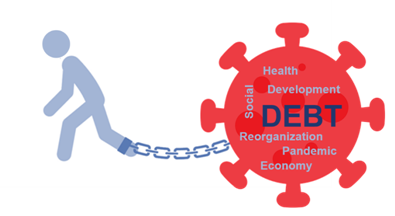Description

Disclaimer: Copyright infringement not intended.
Context
- The Government of Kerala's move to approach the Supreme Court regarding borrowing limits highlights the ongoing debate on financial relations between the Union and the States.
- The Union government advocates for a borrowing limit of 3% of the State's income or Gross State Domestic Product (GSDP), emphasizing fiscal discipline and macroeconomic stability.
- Kerala argues that the borrowing limit imposed by the Centre undermines the State's financial autonomy and violates the principles of federalism, restricting its ability to fulfill essential financial commitments.
State vs Union Government Spending
- Taxation Power and Expenditure Responsibility: In India, the power to raise taxes predominantly rests with the Union government, while a significant portion of government spending occurs at the State level.
- Expenditure Disparity: State governments allocate substantial funds, particularly in sectors like social services, education, and health, reflecting their role in addressing citizens' daily needs and welfare.
Categorization of Expenditures:
- RBI's Classification: The Reserve Bank of India (RBI) categorizes budgetary expenditures into 'developmental' (social services, economic services) and 'non-developmental' categories, providing insights into spending patterns.
- Rising Developmental Spending by States: Over the last two decades, there has been a significant increase in developmental expenditures by State governments, particularly in social services, reflecting a commitment to social welfare.
Sources of Funds for State Governments:
- Own Revenues: State governments generate revenues through taxes and non-tax sources, contributing to their fiscal resources for expenditure.
- Transfers from Union Government: States receive transfers from the Union government in the form of shares of taxes and grants, augmenting their financial capacity.
- Market Borrowings: To bridge the gap between expenditure and revenue, State governments resort to market borrowings, although constrained by borrowing limits.

Kerala's Financial Situation:
- Increased Spending Due to COVID-19: In response to the COVID-19 pandemic, Kerala significantly increased its borrowing to 18% of GSDP in 2020-21 to provide economic relief, highlighting the need for flexible fiscal measures during crises.
- Decline in Union Transfers: Despite increased spending needs, Kerala witnessed a decline in Union transfers to 2.8% of GSDP in 2023-24, posing challenges for meeting expenditure requirements.
- Borrowing Dilemma: With Kerala's borrowing needs exceeding the Centre's imposed limit, the State faces a dilemma, leading to legal intervention for resolution.
Case for Increased Government Spending:
- Need for Higher Spending: Higher government spending is crucial for translating social achievements into economic progress, emphasizing the importance of investment in critical sectors like education and research.
- Emphasis on Education and Research: Investments in education and research are essential for fostering a knowledge-based economy, driving sustainable growth and development.
- Market Borrowing as a Solution: From a Keynesian perspective, effective deployment of borrowed resources for infrastructure development and human capital enhancement can stimulate economic growth and job creation.
Conclusion:
- Collaborative Approach Needed: Union and State governments must collaborate to address common challenges and formulate policies that promote fiscal sustainability and equitable development.
- Kerala's Borrowing Justified: Kerala's borrowing should be viewed as part of a broader strategy for economic revival and long-term growth, emphasizing the importance of balancing immediate financial needs with future development goals.
READ IN DETAIL: https://www.iasgyan.in/daily-current-affairs/government-borrowing-or-public-debt
|
PRACTICE QUESTION
Q. Discuss the role of public debt in India's fiscal policy framework and its implications for economic stability and development. Evaluate the factors influencing the sustainability of public debt and analyze the measures to manage and mitigate the risks associated with rising debt levels.
|













